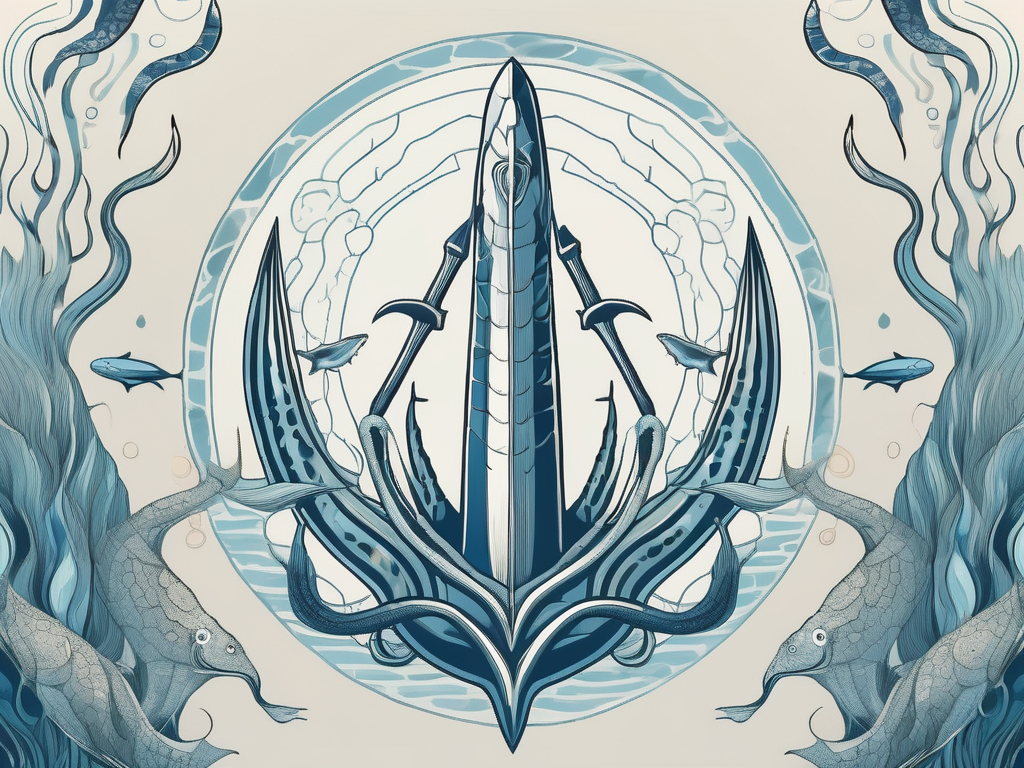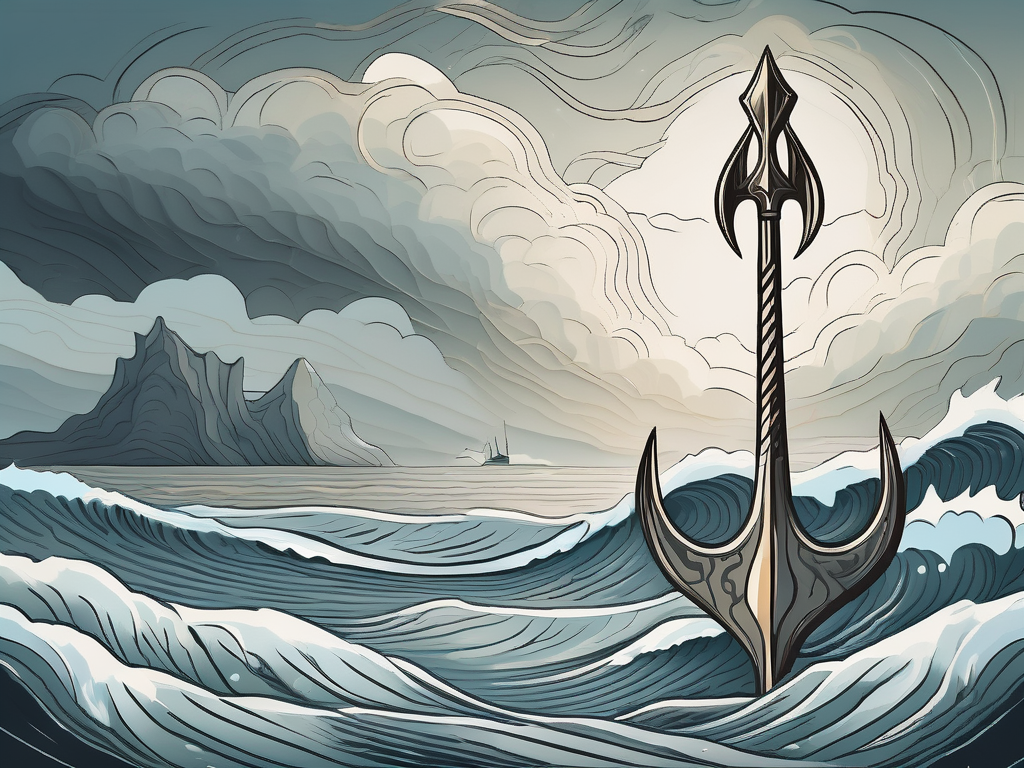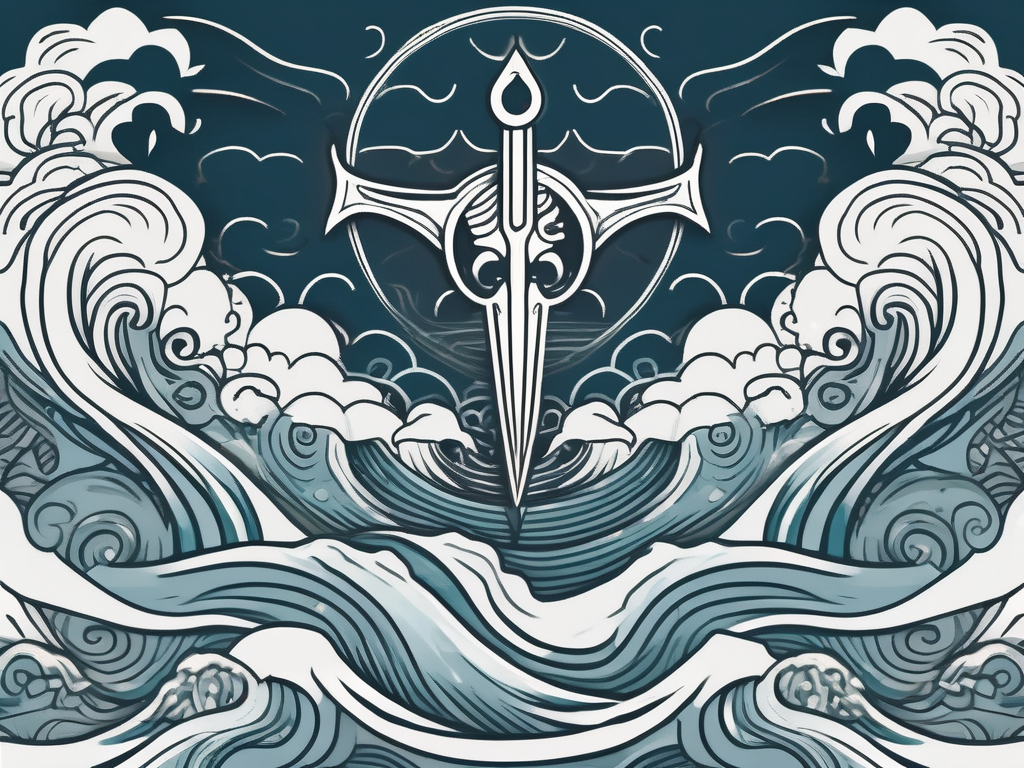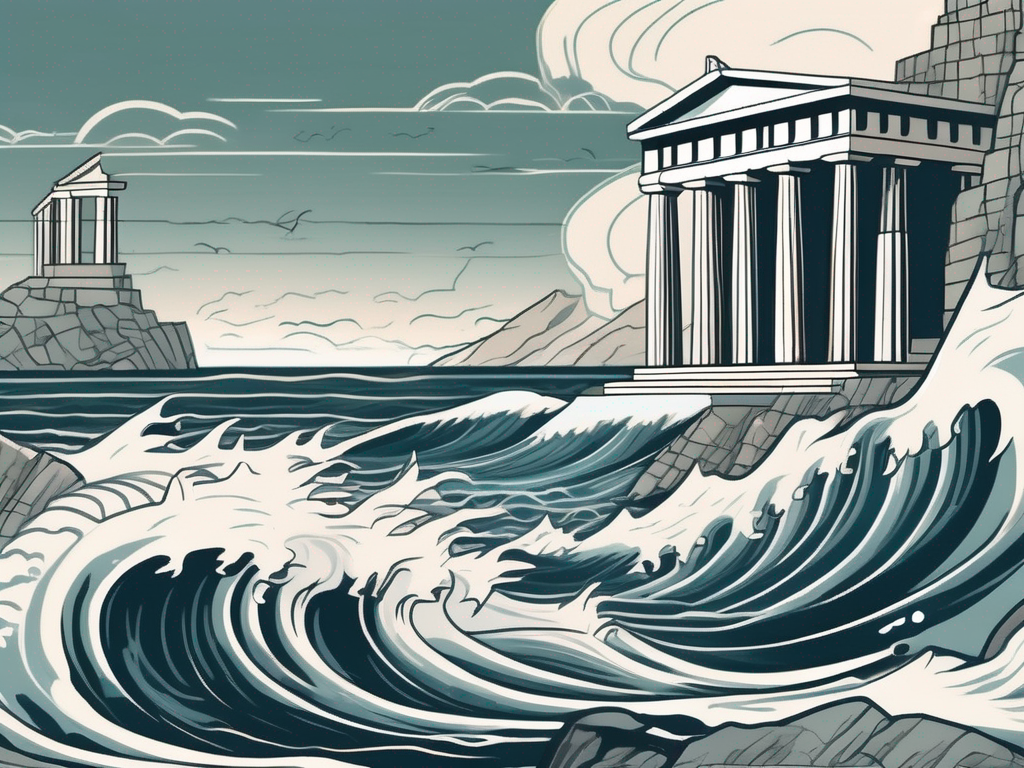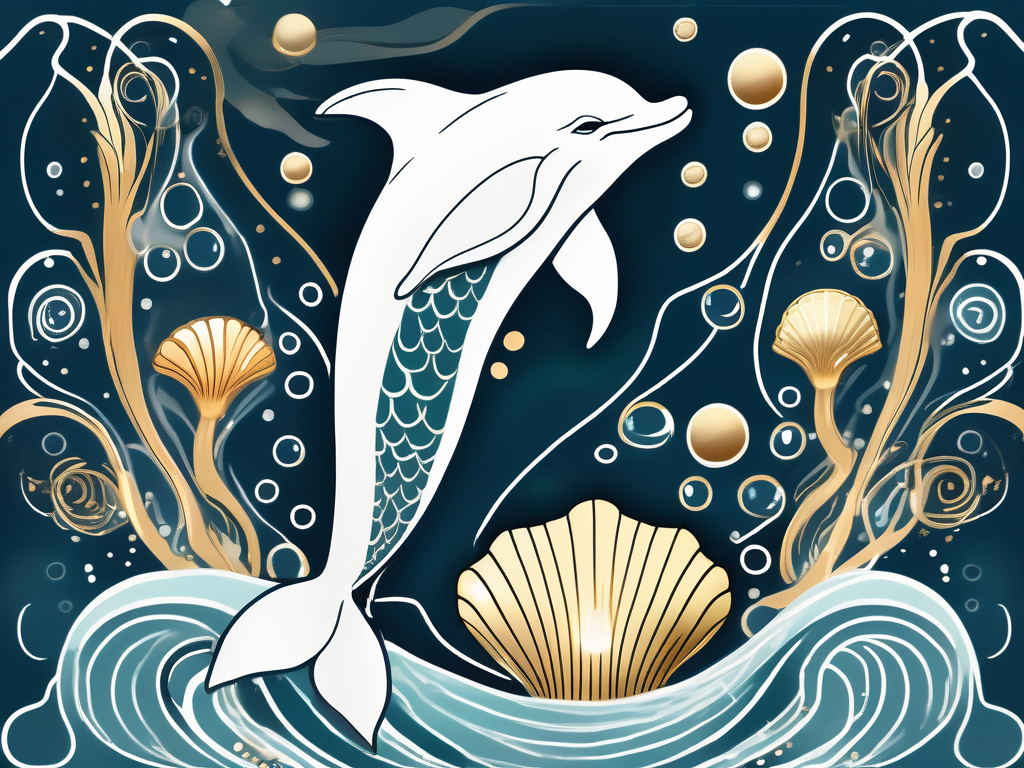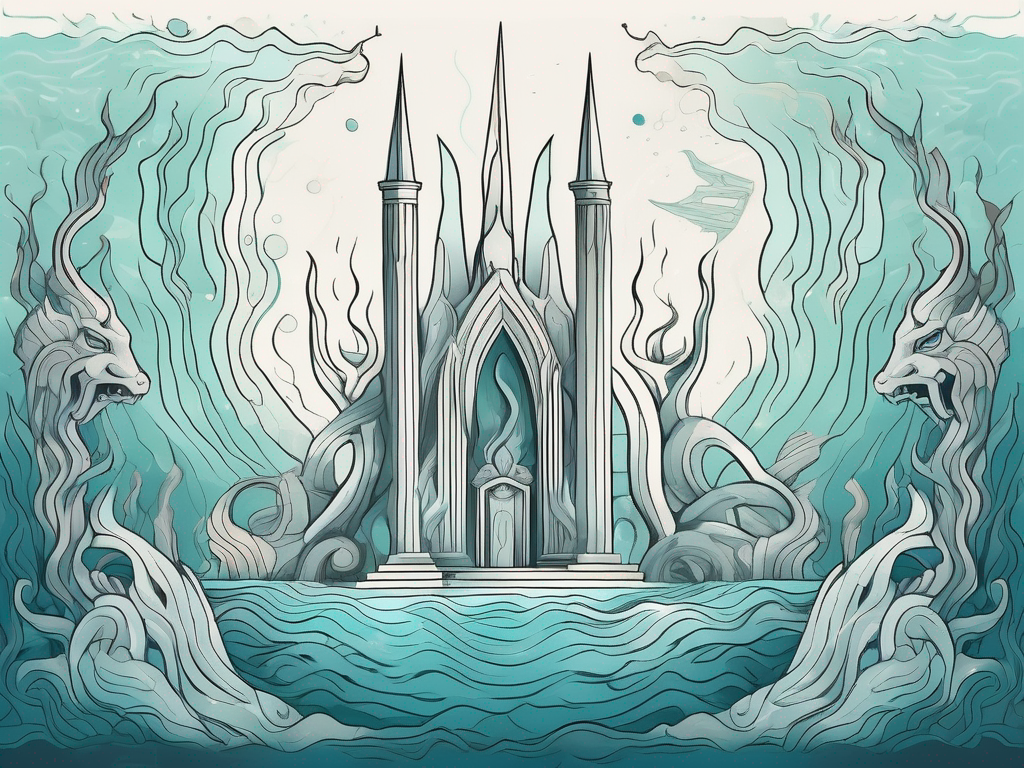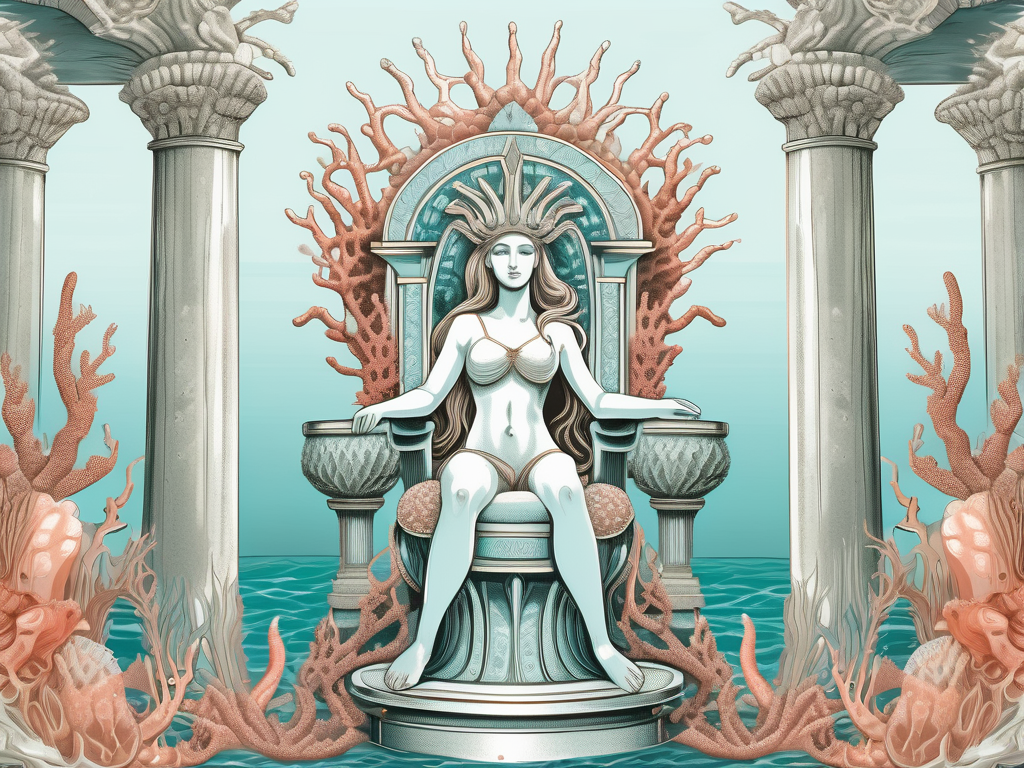In the world of Greek mythology, there are countless gods and goddesses who have captured the imagination of readers and listeners throughout history. One such deity is the enigmatic Ceto, a powerful goddess associated with the sea and all the wonders it holds. Let’s dive deep into the waters and explore the fascinating aspects of Ceto’s character and her significant role in Greek mythology.
Understanding the Role of Ceto in Greek Mythology
When it comes to understanding Ceto’s place in Greek mythology, it is essential to explore her role within the pantheon of gods and goddesses. While not as widely known as some other figures, Ceto played a crucial part in the ancient Greek belief system.
Ceto was recognized as a primordial deity, one of the ancient gods who ruled before the Titans even came into existence. Along with her titan parents, Pontus and Gaia, Ceto was revered as a powerful and awe-inspiring goddess associated with the untamed forces of the sea.
As a symbol of chaos and unpredictability, Ceto represented the vastness of the ocean and the dangerous creatures lurking beneath its surface. She embodied the untamed nature of the sea, both beautiful and treacherous.
Legend has it that Ceto’s presence alone could stir up violent storms and unleash terrifying sea monsters upon unsuspecting sailors. Sailors would often pray to her for safe passage, offering sacrifices to appease her wrath and ensure a smooth journey across the treacherous waters.
One of the most famous tales involving Ceto is the story of Perseus and the Gorgon Medusa. According to the myth, Ceto was the mother of the Gorgons, including Medusa. These monstrous creatures had snakes for hair and a gaze that could turn anyone who looked at them into stone.
Ceto’s association with the Gorgons further emphasized her connection to the dark and mysterious aspects of the sea. The Gorgons were feared by mortals and gods alike, and their existence served as a reminder of the dangers that lay beneath the waves.
Despite her fearsome reputation, Ceto was not entirely malevolent. In some versions of Greek mythology, she was depicted as a protective deity, guarding the sea and its creatures from harm. She was seen as a motherly figure, ensuring the balance between chaos and order in the natural world.
It is also worth noting that Ceto had numerous offspring who played significant roles in Greek mythology. These included monsters such as the sea serpent Ladon, the dragon that guarded the Golden Apples of the Hesperides, and the sea monster Scylla, who terrorized sailors in the Strait of Messina.
Overall, Ceto’s role in Greek mythology highlights the ancient Greeks’ deep respect and reverence for the power and unpredictability of the sea. She symbolized the untamed forces of nature and served as a reminder of the dangers that awaited those who dared to venture into the vast unknown.
The Origins and Family of Ceto
To fully understand Ceto’s character, it is essential to explore her origins and family ties within Greek mythology. According to ancient texts, Ceto was born to the titan parents, Pontus and Gaia.
The Titan Parents of Ceto
Pontus, often depicted as the personification of the sea, and Gaia, the personification of the earth, gave birth to a multitude of powerful and influential deities. Among their children was Ceto, who embodied the chaotic nature of the sea.
Pontus, with his vast and ever-changing waters, represented the unpredictable and untamed aspects of the sea. Gaia, on the other hand, symbolized the stability and fertility of the earth. The union of these two titans brought forth a diverse pantheon of gods and goddesses, each with their unique dominions and characteristics.
Ceto’s Siblings and Their Roles
As the daughter of Pontus and Gaia, Ceto had several siblings, each with their roles and responsibilities in Greek mythology. Some of her noteworthy siblings include the mighty titan Cronus and the goddess Rhea, who played significant roles in the Titanomachy and the subsequent reign of the Olympian gods.
Cronus, known for his immense strength and ambition, was a central figure in the overthrowing of the titans by the Olympians. His actions paved the way for the establishment of Zeus as the ruler of the gods. Rhea, his sister and wife, played a crucial role in protecting and preserving the Olympian gods, particularly Zeus, during their infancy.
Additionally, Ceto’s siblings included Nereus, a wise and shape-shifting sea god, and Eurybia, an influential goddess associated with the mastery of the seas. Nereus, often referred to as the “Old Man of the Sea,” possessed vast knowledge of the ocean and its creatures. He was known for his ability to change his form at will, making him a formidable and enigmatic deity.
Eurybia, on the other hand, embodied the power and authority over the turbulent seas. She was revered by sailors and seafarers, who sought her blessings for safe voyages and protection against the treacherous storms. Eurybia’s presence instilled both fear and respect among those who traversed the vast expanse of the sea.
These siblings further emphasized the expansive influence of Ceto and her family within Greek mythology. Their collective powers and roles shaped the narrative of the ancient world, intertwining the realms of land and sea, and establishing a complex web of relationships among the gods and goddesses.
Ceto’s Offspring: Monsters and Sea Creatures
Ceto, the primordial goddess of the sea, was a powerful and enigmatic figure in Greek mythology. Her true power and significance manifested in her offspring, who were often depicted as fearsome monsters and fantastical sea creatures. These creatures served as a testament to the immense power and untamed nature of the sea.
The Gorgons: Daughters of Ceto
Among Ceto’s most notorious daughters were the Gorgons, who instilled terror in the hearts of both mortals and gods. These monstrous beings were known for their menacing appearances and deadly abilities. The most well-known Gorgon, Medusa, possessed serpentine hair and a gaze that turned any who looked upon her into stone. The mere mention of the Gorgons sent shivers down the spines of those who heard their name.
The Gorgons were a constant reminder of Ceto’s deep connection to the dark and mysterious depths of the sea. Their monstrous forms and terrifying powers reflected the untamed and unpredictable nature of the ocean, a force to be feared and respected.
The Graeae: The Grey Sisters
In contrast to the Gorgons, the Graeae were three sisters who shared a single eye and a single tooth among them. These ancient beings were known for their prophetic abilities and their connection to fate and destiny. They were often depicted as old hags, with wrinkled skin and crooked backs, representing the ancient and mysterious aspects of Ceto.
The Graeae embodied the wisdom and secrets hidden within the depths of the sea. Their shared eye and tooth symbolized their unity and the interconnectedness of all things. They were the keepers of ancient knowledge, whispering prophecies and revealing hidden truths to those who sought their wisdom.
As the offspring of Ceto, both the Gorgons and the Graeae were embodiments of the power and mystery of the sea. They served as a constant reminder of the vastness and untamed nature of the ocean, a realm filled with both beauty and danger.
Ceto in Ancient Literature and Art
Throughout ancient Greek literature and art, Ceto made appearances that further solidified her status within the pantheon of gods and goddesses.
References to Ceto in Greek Literature
In various ancient Greek texts, Ceto is mentioned in connection with the gods and heroes who ventured into the sea. Scholars have found references to her in stories such as the adventures of Odysseus and the quests of the Argonauts.
By including Ceto in these tales, ancient authors highlighted the treacherous and unpredictable nature of the sea, as well as the crucial role she played in shaping the destinies of mortals and immortals alike.
Depictions of Ceto in Ancient Art
Ancient artists often portrayed Ceto as a formidable and awe-inspiring figure, capturing her essence through intricate sculptures and elaborate vase paintings. These artworks showcased her connection to the vastness of the sea while showcasing her monstrous offspring and mystical prowess.
From her flowing mane of seaweed-like hair to her fierce and commanding presence, Ceto’s depiction in ancient art served as a reminder of the untamed power and beauty of the ocean.
The Modern Influence of Ceto
Even though Ceto belongs to the ancient world, her influence can still be felt in various aspects of modern culture.
Ceto’s Influence on Modern Literature and Film
Ceto and her offspring, particularly the Gorgons, continue to inspire contemporary authors and filmmakers. Characters based on these mythical beings often appear in modern fantasy literature and movies, captivating audiences with their mythical allure and fearsome abilities.
Moreover, the concept of chaos and unpredictability associated with Ceto resonates with many authors and filmmakers, who explore these themes in their works, often drawing on ancient Greek mythology for inspiration.
The Astronomical Connection: Ceto’s Place in the Stars
Interestingly, Ceto’s influence extends beyond literature and film. In modern astronomy, a celestial object has been named after the Greek goddess. Ceto, also known as 65489 Ceto, is a distant object located in the outer region of the solar system, further emphasizing the lasting impact of this ancient deity.
In conclusion, Ceto, the enigmatic goddess of the sea, holds a fascinating place within Greek mythology. From her role in the ancient pantheon to her terrifying offspring and her presence in ancient literature and art, Ceto continues to captivate the imagination. Her influence can be seen in modern culture, from the pages of books to the vastness of the night sky. By diving into the depths of Ceto’s mysteries, we uncover a powerful deity who embodies the untamed and awe-inspiring forces of the sea.
